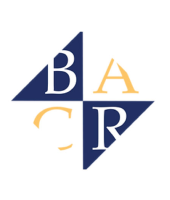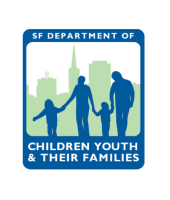It’s summer again here at Sunset Media Wave, which means that we have tons of new Wavers to bring in their most creative contributions to The Wave. In the interest of getting to know everyone (and ourselves) a bit better, we have been conducting several sets of rigorous (but mostly fun) online quizzing. Check out the painstaking data visualization and analysis of our experience, compiled neatly below.
1. The Myers-Briggs Type Indicator (MBTI)
The Myers-Briggs Type Indicator (or the MBTI, as indicated above) is a personality test created by Katharine Cook Briggs and her daughter, Isabel Briggs Myers, from a concept conceived by psychology giant Carl Jung. In Jung’s theory, he prophesied that an individual’s personality came from multiple different indicators, which can be seen in the different levels within the MBTI test–extraversion, introversion, sensing, intuition, thinking, feeling, perceiving, and judging. Look below for a much more comprehensive and understandable description of the test’s different elements.
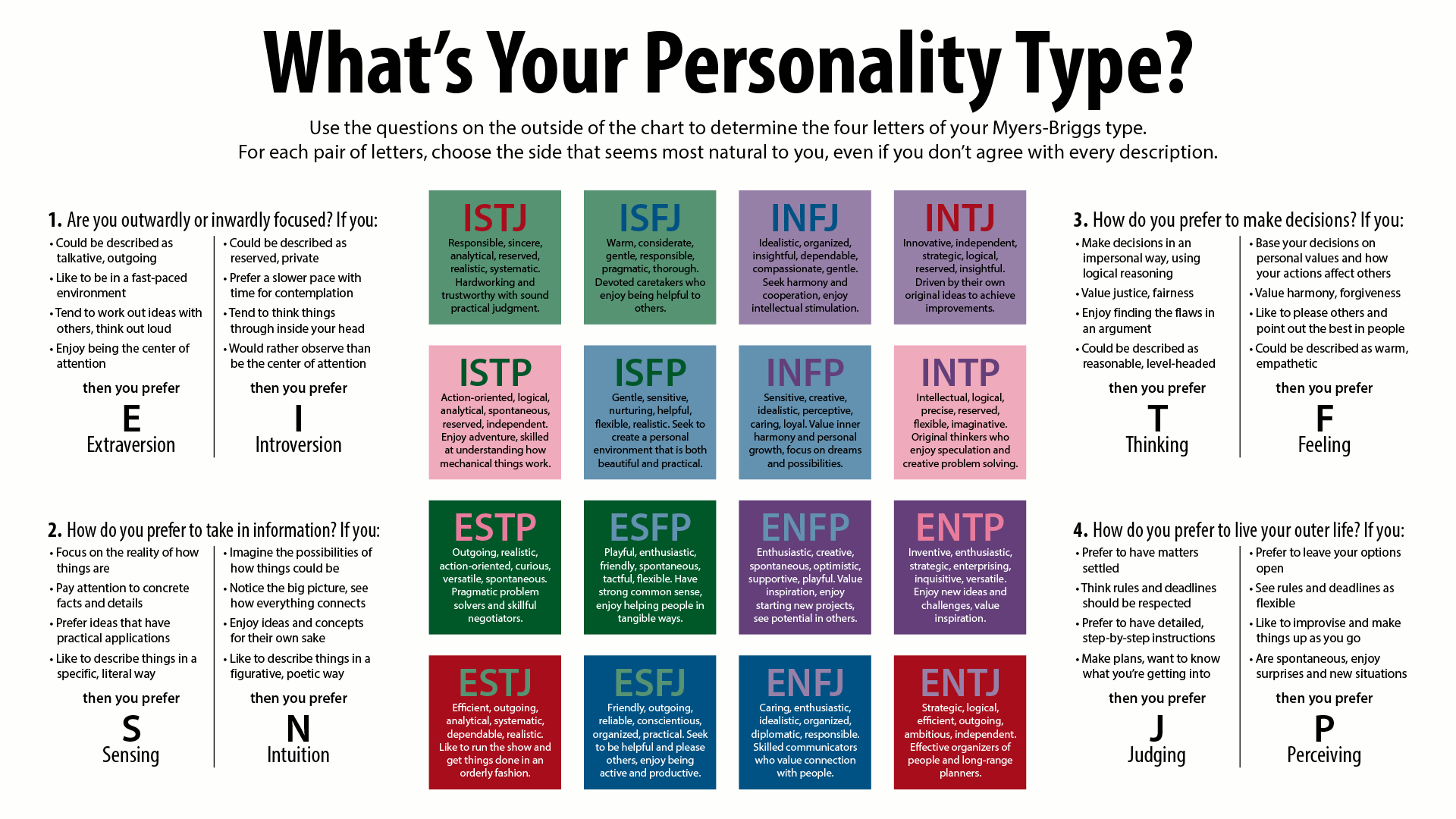
Okay, so we didn’t do the official MBTI, because the true test is incredibly scientifically comprehensive and has to be conducted by an actual psychologist. However, this site (which is the most popularly used one, when attempting an amateur MBTI) charades and duplicates it quite well, so that was what we used. Below are the results of the personalities of all our Wavers who took the personality test.

Another reason that we liked this version of the MBTI is that, when it’s giving you your results, it puts them in this fun, colorful format, and gives your personality type an archetype that you can relate to. For example, the personality result of INFP is pegged as The Mediator. One of the more common personality types that we got, ENFJ, is The Protagonist. That’s one of the funnest parts about this personality quiz; it provides you with an animated character meant to emulate the personality presented in your results. In the image below, you can see the specifics of some of the Wavers’ personalities, but what you can also see is the percentages within each level of the results; as is most realistic of individuals and humanity in general, while often one will fall into a certain category, it’s not as if they will only fall into one category.
“There are no evil spirits; there is light and dark in them all.” – Unalaq, Legend of Korra, Book 2
2. Dungeons & Dragons Alignment Test
In the multiplayer fantasy game Dungeons & Dragons, when a new player is entering, they must first determine the character they intend to use to enter the platform of adventure that D&D is based on. Within this character is multiple different traits, including their name, race, class, ability scores, and… alignment. Dungeons & Dragons‘ wikipedia page describes this as “a moral and ethical outlook”, and is presented along a spectrum of good, neutral, and evil, and are made more specific with the adjectives of lawful, neutral, and chaotic, giving the spectrum of the alignment test nine possible outcomes. Good characters and creatures protect innocent life; evil characters and creatures debase or destroy innocent life, whether for fun or profit. Lawful characters tell the truth, keep their word, respect authority, honor tradition, and judge those who fall short of their duties; chaotic characters follow their consciences, resent being told what to do, favor new ideas over tradition, and do what they promise if they feel like it.
However, the best way both to describe and understand the alignment test and its results actually is to look at the memes that the Internet has relentlessly derived from this test to categorize their favorite series, films, books, video games, celebrities, et cetera, et cetera. Some of my favorites, though, are those manipulations of the alignment test that don’t follow a particular set of characters or people, but instead, seemingly uninteresting objects.
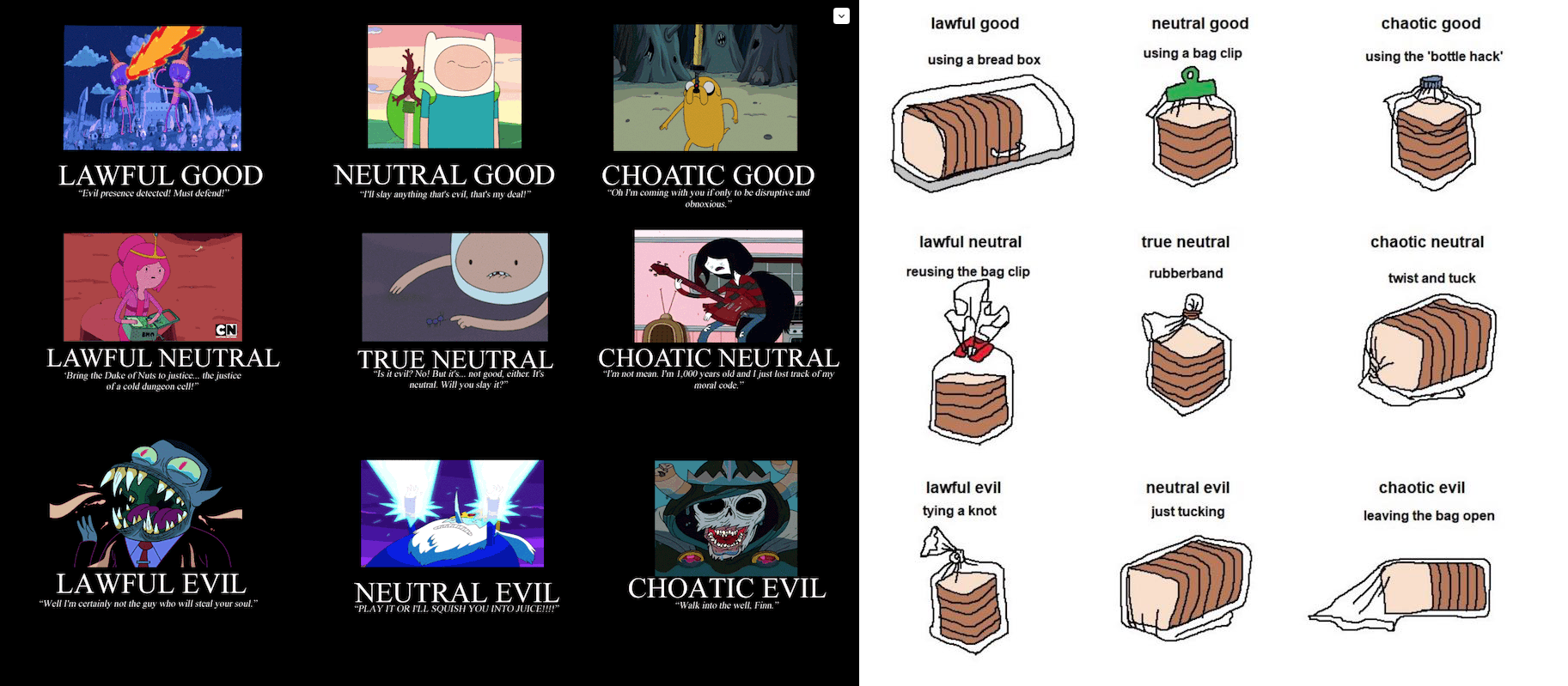
The D&D alignment test, while derived from a process within the game so popular in the ’70s, is interesting and popular to many outside the sphere of people interested in D&D, due to its versatility. While it was originally meant for a specific purpose and a specific type of people, the spectrum provided by the test can now be appealing to anyone, especially given a recent rise in popularity of online quizzes, following Buzzfeed‘s sudden ascension as goddess of all the online quiz sites.
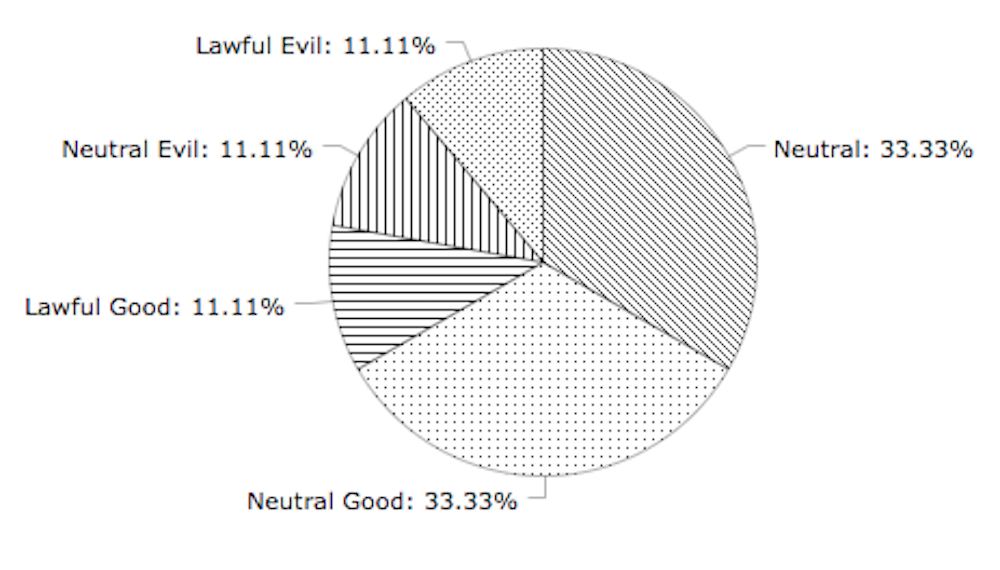
Unfortunately, not all of the Wavers present for this gorgeous summer cycle were available to participate in our exploration into our fantastical selves with this activity, so this is reflective of a very small sample of about 9 people.
3. Harry Potter Hogwarts Sorting Test
This last quiz that we did here at The Wave was, far and away, the best and most fun one to do. Many are familiar with the premise of Sorting as it was presented in the fictional school, Hogwarts, created in J. K. Rowling’s Harry Potter series. In the series, the students of Hogwarts are sorted into one of four Houses using the millennia-old Sorting Hat; following the series’ booming success and popularity across cultures, classes, and calamities, avid Harry Potter readers (and even those who could take or leave the series, but still enjoy a good quiz) have been left to wonder what House they should be Sorted into.
“You might belong in Gryffindor,
Where dwell the brave at heart,
Their daring, nerve, and chivalry
Set Gryffindors apart;
You might belong in Hufflepuff,
Where they are just and loyal,
Those patient Hufflepuffs are true
And unafraid of toil;
Or yet in wise old Ravenclaw,
if you’ve a ready mind,
Where those of wit and learning,
Will always find their kind;
Or perhaps in Slytherin
You’ll make your real friends,
Those cunning folks use any means
To achieve their ends.” – The Sorting Hat, Harry Potter & The Philosopher’s Stone, J. K. Rowling
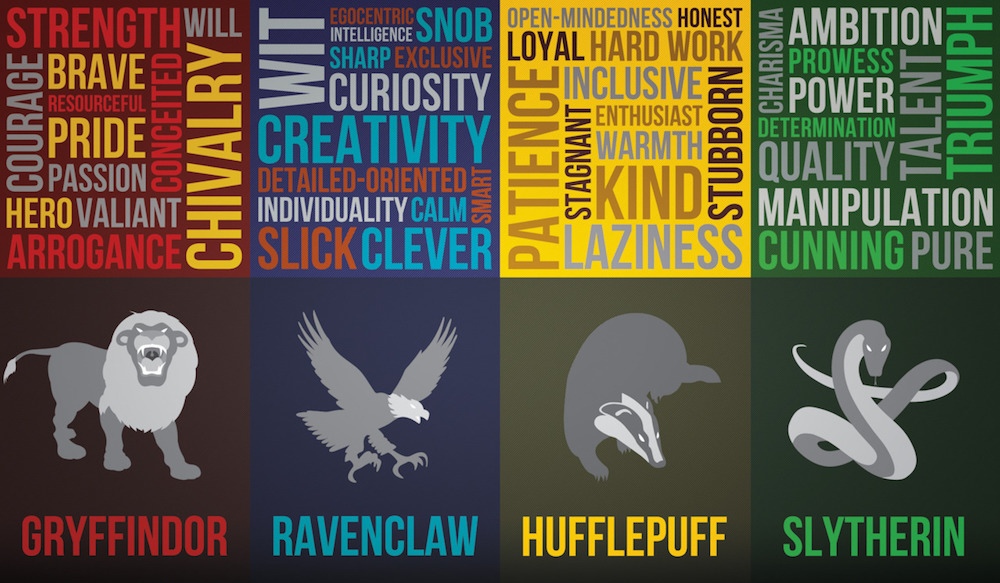
Most people who subscribe religiously to the majesty of Harry Potter will tell you that the only canonic test and the only true way to know what House you belong to is to use the test provided on the official Harry Potter site, Pottermore, which was created by Rowling herself. However, to access the Sorting within this particularly knowledgable database, one not only has to create an account, but to confirm the email used within said account, which is, as anyone can attest, Too Much Work.
Given this, one of our noblest Wavers, Belle of Earth to Belle, quickly found a solution to our problem, in the form of this Buzzfeed quiz claiming to use all of the same questions as the Sorting on Pottermore, and therefore, theoretically, produce the same results. We put this hypothesis to the test, knowing that any and all House results that it gave should be taken with a grain of salt, given that it was not, by any means, the official test.
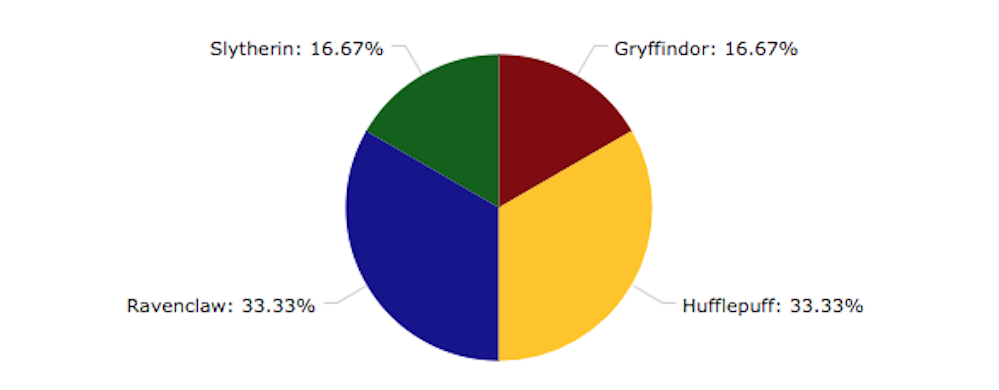
As always, stay tuned for more posts highlighting our Wavers’ activities, group projects, and compilations of individual Waver work!



